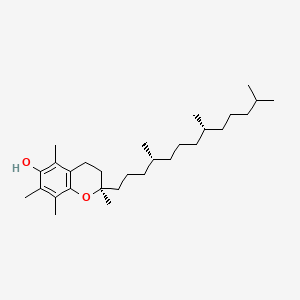| ImmunCR Id : | ICR45 |
| Chemical Name : | Vitamin E |
| Plant Source : | Actinidia deliciosa |
| Nutraceutical information : | Edible, nuts (almonds, peanuts), some seeds (sunflower), and vegetable oils (olive), eggs |
| Mode of administration : | Oral, Capsules |

| Immunomodulatory mechanism : | Type 2 diabetes (Decreased malonaldehyde and Nitric oxide levels), Antioxidant (superoxide dismutase and erythrocyte reduced glutathione, increased plasma glutathione levels, decreased urine F2-isoprostanes (oxidative stress biomarker in smoker males)), anti-inflammatory (suppressed pro-inflammatory markers and cyclooxygenase-2, reduced plasma TNF-α, reduced level of CRP and monocyte IL-6, reduced lipopolysaccharide (LPS)-activated nuclear factor κb –nfκb and decreased LPS-induced lipid peroxidation and the production of proinflammatory cytokines (IL6 and IL-1β) in the brain, Neuroprotection (survival factor for Purkinje neurons needed to prevent AVED (ataxia with Vit E defficiency), reduced risk of mild cognitive impairment and Alzheimer's disease). |
| Description : | Vitamin is a fat soluble molecule composed of four tocopherols and four tocotrienols, both possessing hydrophillic chromanol ring and isoprenoid side chain, of these eight α-tocopherol is the most abundant and responsible for most anti-oxidant activity. It is helpful in development of tissue and organs like muscles, bone, brain, nerves, skin , bone marrow, and blood. |
| IUPAC Name | (2R)-2,5,7,8-tetramethyl-2-[(4R,8R)-4,8,12-trimethyltridecyl]-3,4-dihydrochromen-6-ol |
| SMILES | CC1=C(C2=C(CCC(O2)(C)CCCC(C)CCCC(C)CCCC(C)C)C(=C1O)C)C |
| Formula | C29H50O2 |
| InchiKey | GVJHHUAWPYXKBD-UHFFFAOYSA-N |
| Kingdom | Organic compounds |
| Superclass | Lipids and lipid-like molecules |
| Class | Prenol lipids |
| Subclass | Quinone and hydroquinone lipids |
| LogP | 10.44 |
| Molecular weight | 430.706 |
| Hydrogen Bond Acceptor | 2 |
| Hydrogen Bond Donor | 1 |
| Polar surface area | 29.745 |
| No. of rotatable bonds | 12 |
| Number of Aromatic Rings | 1 |
| Number of rings | 2 |
| Absorption level | Very low |
| Solubility level | Very Soluble |
| Blood Brain Barrier | Undefined |
| Plasma protein binding | Binder |
| CYP2D6 inhibition | Non-Inhibitor |